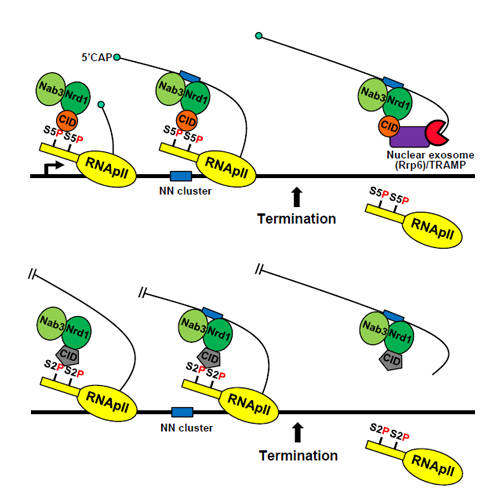The RNA Polymerase II C-terminal Domain-Interacting Domain of Yeast Nrd1 Contributes to the Choice of Termination Pathway and Couples to RNA Processing by the Nuclear Exosome
06-Nov-2013
The RNA polymerase II (RNApII) C-terminal domain (CTD)-interacting domain (CID) proteins are involved in two distinct RNApII termination pathways and recognize different phosphorylated forms of CTD. To investigate the role of differential CTD-CID interactions in the choice of termination pathway, we altered the CTD-binding specificity of Nrd1 by domain swapping. Nrd1 with the CID from Rtt103 (Nrd1[CIDRtt103]) causes read-through transcription at many genes, but can also trigger termination where multiple Nrd1/Nab3-binding sites and Ser2P CTD co-exist. Therefore, CTD-CID interactions target specific termination complexes to help choose an RNApII termination pathway. Interactions of Nrd1 with both CTD and nascent transcripts contribute to efficient termination by the Nrd1 complex. Surprisingly, replacing the Nrd1 CID with that from Rtt103 reduces binding to Rrp6/Trf4, and RNA transcripts terminated by Nrd1[CIDRtt103] are predominantly processed by core exosome. Thus, the Nrd1 CID couples Ser5P CTD not only to termination, but also to RNA processing by the nuclear exosome.











